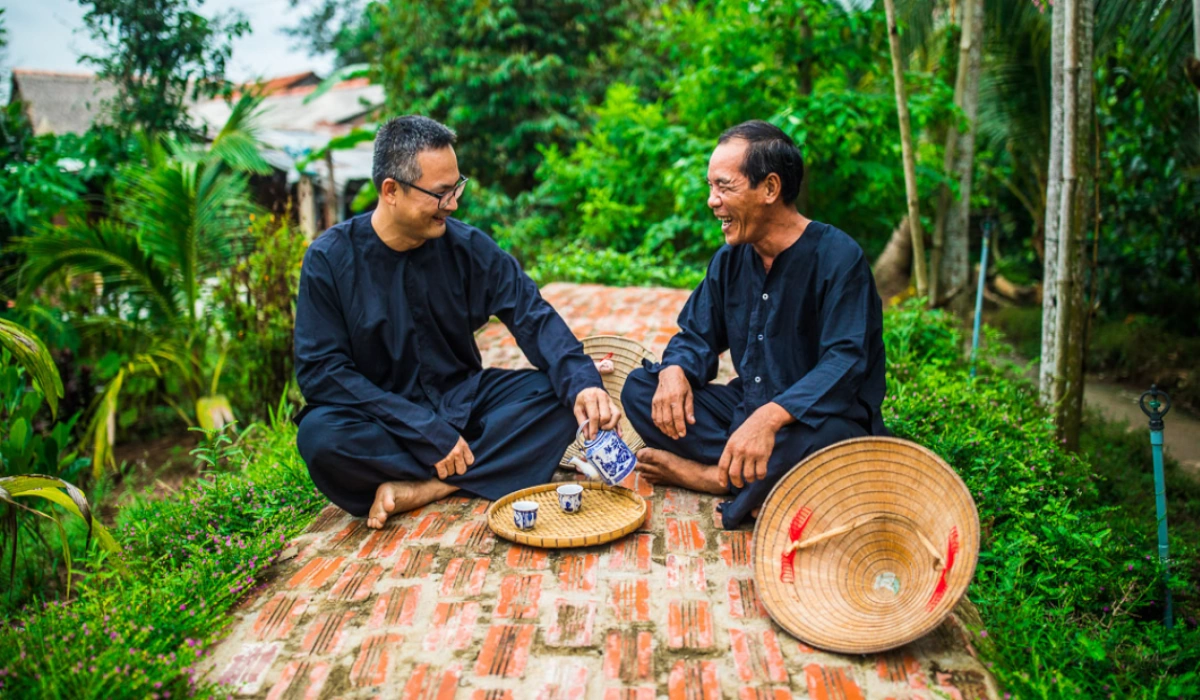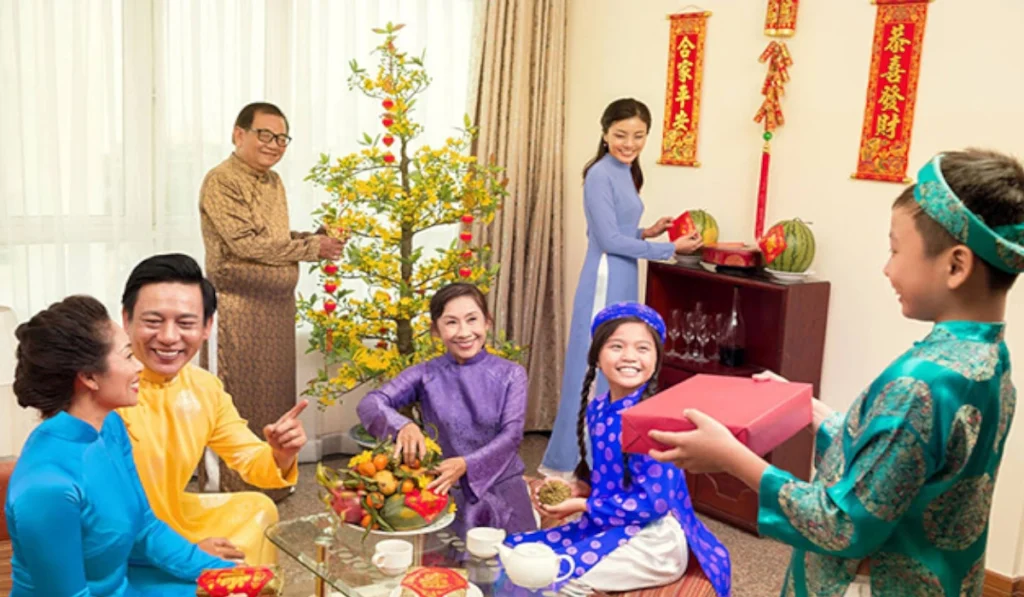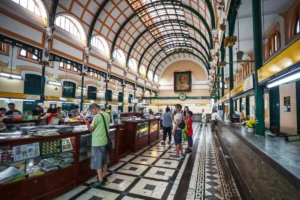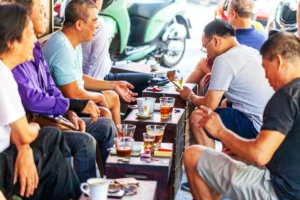
Cultural Etiquette in Vietnam: What Every Traveler Should Know
Vietnam is a captivating country known for its stunning landscapes, vibrant cities, and rich cultural heritage. As a traveler, understanding the local customs and cultural etiquette in Vietnam can greatly enhance your experience and help you connect more deeply with the people. From greetings and dining manners to dress codes and temple etiquette, this guide will help you navigate Vietnam’s cultural norms and practices, ensuring you show respect and appreciation for the local traditions.
Understanding Vietnamese Culture and Values
Vietnamese culture is deeply influenced by Confucianism, Buddhism, and a long history of traditional values that emphasize respect for elders, community, and family. Understanding these core values will help you appreciate why certain behaviors and etiquettes are important in Vietnam.
Respect for Elders: In Vietnamese society, elders are highly respected, and it’s common to prioritize older individuals in conversations, seating arrangements, and other social interactions. Addressing elders with respect and showing deference in public is a significant part of cultural etiquette.
Community and Family Values: Family and community play a central role in Vietnamese life. The well-being of the family often takes precedence over individual desires, and collective harmony is valued over personal expression. As a visitor, being mindful of how your actions might affect others is crucial.
Modesty and Humility: Modesty is an important value in Vietnam. Bragging about achievements or displaying wealth is generally frowned upon. Vietnamese people appreciate humility, and they often downplay their own accomplishments to maintain social harmony.
Greetings and Communication Etiquette
Proper greetings and respectful communication are essential aspects of Vietnamese cultural etiquette. Here’s how to navigate social interactions effectively:
Greetings: The most common way to greet someone in Vietnam is with a slight bow and a smile. Handshakes are also common, especially in business settings, but they should be gentle rather than firm. For women, it’s generally best to wait for them to extend their hand first, as some may prefer a nod or slight bow instead.
Names and Titles: Vietnamese names are usually structured as last name, middle name, and first name. When addressing someone formally, use their title followed by their first name, such as “Mr. Thanh” or “Ms. Linh.” For older individuals, use respectful titles like “Bà” (grandmother) or “Ông” (grandfather), even if they are not family.
Non-Verbal Communication: Body language plays a crucial role in Vietnamese communication. Avoid standing with your hands on your hips, crossing your arms, or pointing with your finger, as these gestures can be considered rude. Instead, use your whole hand to gesture or point and keep your posture relaxed and open.
Showing Respect: When speaking with someone older or of higher status, lower your head slightly as a sign of respect. Avoid direct eye contact for prolonged periods, especially with elders, as it may be perceived as confrontational.
Dining Etiquette in Vietnam
Dining in Vietnam is not just about eating but also about sharing and enjoying a communal experience. Here’s what you need to know to navigate Vietnamese dining culture:
Table Manners: Meals in Vietnam are typically served family-style, with dishes placed in the center of the table for everyone to share. It’s polite to wait for the oldest person at the table to start eating before you begin. When eating, keep your chopsticks on the chopstick rest when not in use, and never leave them sticking upright in a bowl of rice, as this resembles incense at a funeral and is considered bad luck.
Sharing Food: In Vietnamese dining, it’s customary to offer food to others before serving yourself. This gesture shows thoughtfulness and respect for your dining companions. You can also show appreciation by complimenting the cook or host on the food.
Drinking Etiquette: When drinking alcohol, it’s polite to wait for the host to make the first toast. To avoid appearing impolite, always take a sip when someone offers a toast, even if you don’t drink much. When pouring drinks, it’s respectful to serve others first, especially elders, before serving yourself.
Paying the Bill: In Vietnam, it’s common for one person, often the host, to pay the bill rather than splitting it. If you’re invited to a meal, it’s polite to offer to contribute, but don’t insist too much, as this can cause embarrassment. If you’re hosting, paying the bill without discussion is considered courteous.
Dress Code and Appearance
Vietnamese people value modesty and neatness in appearance, and dressing appropriately is a sign of respect. Here’s what you should consider when choosing your attire:
General Dress Code: In urban areas like Hanoi and Ho Chi Minh City, casual but neat attire is acceptable. However, it’s important to avoid overly revealing clothing such as short shorts, low-cut tops, or tank tops, especially in more conservative areas or rural settings.
Visiting Temples and Pagodas: When visiting religious sites, dressing modestly is a must. Wear clothing that covers your shoulders and knees, and avoid wearing hats or sunglasses inside temples. It’s also customary to remove your shoes before entering pagodas, homes, or certain indoor spaces.
Beachwear: Swimwear is acceptable at beaches and pools, but it’s best to cover up when leaving these areas. Walking around in swimwear or shirtless in public spaces away from the beach is considered inappropriate.
Etiquette for Visiting Temples and Religious Sites
Temples and pagodas are significant cultural and religious sites in Vietnam, and observing proper etiquette is essential when visiting these places.
Respectful Behavior: Always maintain a quiet and respectful demeanor when visiting temples. Avoid loud conversations, laughing, or making noise that could disrupt the serene environment. Refrain from touching religious statues or artifacts, as this can be seen as disrespectful.
Offerings and Donations: It’s common for locals to make offerings of incense, flowers, or food at temples. As a visitor, you can participate by making small donations, but it’s important to follow the temple’s customs and place offerings in designated areas.
Photography: Before taking photos inside a temple, check if photography is allowed. Some temples have restrictions, and it’s always best to ask for permission. Avoid taking photos during religious ceremonies, and never photograph monks or worshippers without consent.
Gift-Giving Etiquette in Vietnam
Gift-giving is a common practice in Vietnam, whether for special occasions or as a gesture of appreciation. Understanding the nuances of this cultural practice can help you make a good impression.
Appropriate Gifts: Small, thoughtful gifts such as souvenirs from your home country, high-quality teas, or fruit baskets are appreciated. Avoid giving anything sharp like knives or scissors, as these symbolize the severing of relationships.
Presentation: Presentation matters in Vietnamese culture. Wrap gifts in bright colors like red, which symbolizes good luck, and avoid black or white wrapping, as these colors are associated with funerals.
When to Give Gifts: Gifts are often given at the end of a visit or meeting. Offer your gift with both hands, and do not expect the recipient to open it immediately, as it’s customary to wait until later.

Navigating Social Situations
Understanding general social etiquette will help you avoid cultural faux pas and engage more meaningfully with the Vietnamese people.
Touching and Personal Space: Public displays of affection, such as kissing or hugging, are uncommon and should be avoided. A gentle handshake or slight bow is a suitable way to greet someone. Personal space is also respected, so avoid touching people unnecessarily.
Politeness and Humility: Politeness is deeply ingrained in Vietnamese culture. Use polite language, and always express gratitude. Phrases like “Cảm ơn” (Thank you) and “Xin lỗi” (Sorry) are appreciated. Avoid raising your voice or showing anger in public, as it’s seen as losing face and disrupting harmony.
Handling Money: When paying or receiving money, use both hands as a sign of respect. Tipping is not mandatory but is appreciated in restaurants, taxis, and for personal services.
Conclusion
Understanding and respecting cultural etiquette in Vietnam will enhance your travel experience, allowing you to connect more deeply with the local people and culture. From greetings and dining manners to temple visits and social customs, following these guidelines will help you navigate Vietnam’s rich cultural landscape with confidence and respect.
By familiarizing yourself with Vietnam’s cultural norms, you’ll not only avoid unintentional mistakes but also show your appreciation for the country’s traditions, making your journey through Vietnam a more rewarding and memorable experience.
Delve deeper: Discovering Vietnam





